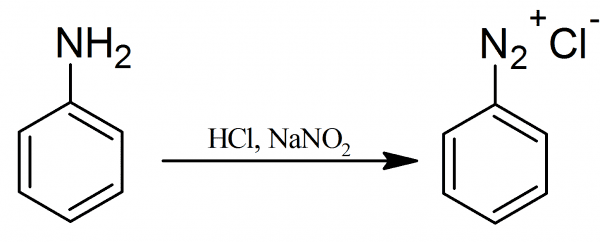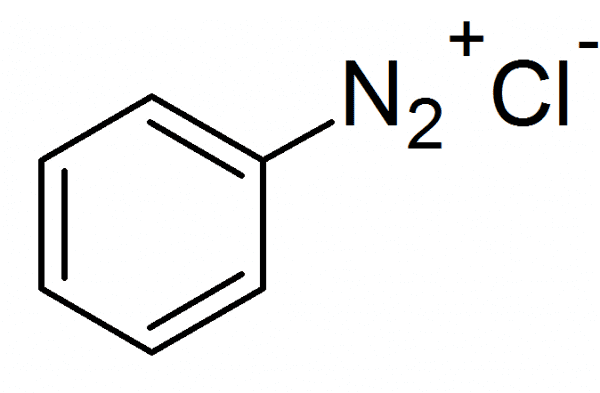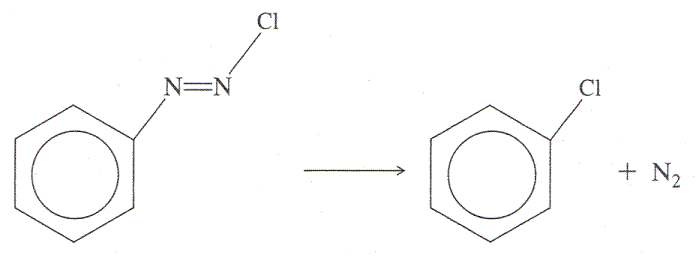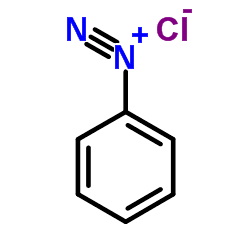Appearance colorless crystals | ||
 | ||
Reactions with benzenediazonium chloride
Benzenediazonium chloride is an organic compound with the formula [C6H5N2]Cl. It is a salt of a diazonium cation and chloride. It exists as a colourless solid that is soluble in polar solvents including water. It is the parent member of the aryldiazonium compounds, which are widely used in organic chemistry. Because the salt is unstable, it is not commercially available but is prepared upon demand.
Contents
- Reactions with benzenediazonium chloride
- Formation of benzenediazonium chloride
- Synthesis
- Chemical properties
- Safety
- References

Formation of benzenediazonium chloride
Synthesis

This compound is prepared by diazotization of aniline. The conversion involves in situ production of nitrous acid (HNO2), which reacts with the aniline:
C6H5NH2 + HNO2 + HCl → [C6H5N2]Cl + 2 H2OThe reactions are conducted at low temperature to minimize decomposition of the diazonium salt.

Diazonium chloride can also be prepared by treating nitrite esters with aniline in presence of HCl. Nitrite esters are formed from alcohol and nitrous acid.
C5H11ONO + HCl + C6H5NH2 → [C6H5N2]Cl + C5H11OH + H2OChemical properties
The diazo group (N2) can be replaced by many other groups, usually anions, giving a variety of substituted phenyl derivatives:
C6H5N2+ + Nu− → C6H5Nu + N2These transformations are associated with many named reactions including the Schiemann reaction, Sandmeyer reaction, and Gomberg-Bachmann reaction. A wide range of groups that can be used to replace N2 including halide, SH−, CO2H−, OH−. Of considerable practical value in the dye industry are the diazo coupling reactions.
Safety
The compound is explosive.
